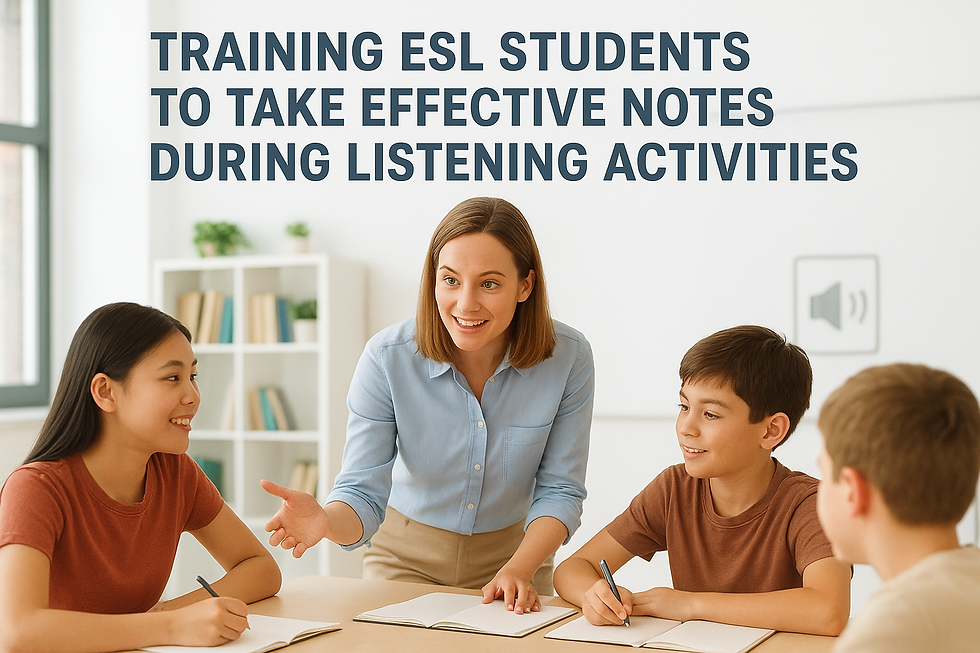Using Minimal Pairs to Sharpen ESL Pronunciation Skills
- Michael Brandon
- Oct 12
- 2 min read

🎯 Introduction
For many ESL learners, pronunciation is the final step toward fluency. Small sound differences—like ship/sheep or rice/lice—can completely change meaning. Minimal pairs (words differing by only one sound) are one of the most powerful tools for helping students develop clearer and more confident pronunciation.
🗣️ Why Minimal Pairs Matter
English has sound contrasts that don’t exist in many learners’ native languages. By focusing on minimal pairs, students learn to:
Differentiate between similar vowel or consonant sounds
Improve listening accuracy and sound awareness
Speak more clearly and confidently
Strengthen their pronunciation memory through repetition and contrast
This approach trains both the ear and the tongue, allowing learners to hear before they produce.
🎲 Practical Classroom Activities
1. Listen & Identify:
Say one of the two words aloud (e.g., “ship” or “sheep”). Students raise one hand or point to the correct flashcard.
2. Pair Practice:
Divide students into pairs. One says a word from the pair, and the other guesses which one it is — then they switch roles.
3. Minimal Pair Bingo:
Give students bingo sheets with minimal pair words. Call them out randomly — they must listen carefully to mark the right one!
4. Pronunciation Corners:
Label two corners of the classroom with words from a minimal pair. Say one aloud — students move to the corner they think matches what they heard.
5. Record & Reflect:
Have students record themselves reading minimal pairs. They can compare their pronunciation to native samples for self-correction.
💡 Pro Tip
Don’t overload students with too many pairs at once. Start with high-frequency contrasts (like /i:/ vs /ɪ/), and reinforce them over multiple lessons through games and repetition.
📌 Final Thought
Minimal pairs make pronunciation fun, interactive, and highly effective. When used regularly, they help learners master sounds that once seemed impossible. Through GoTEFL, teachers gain the methods to make pronunciation practice dynamic, and through TEIK, they see real classroom results around the world.




Comments